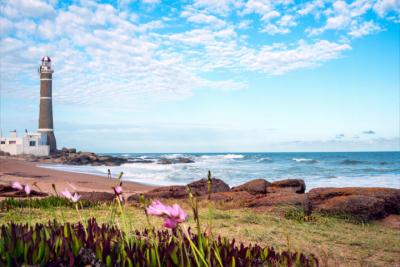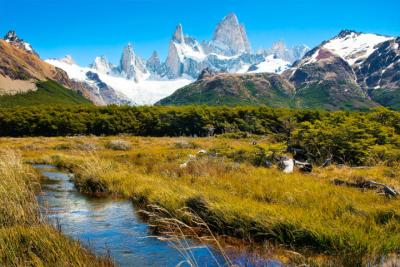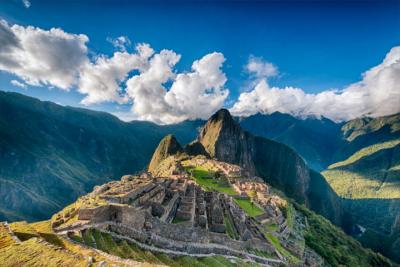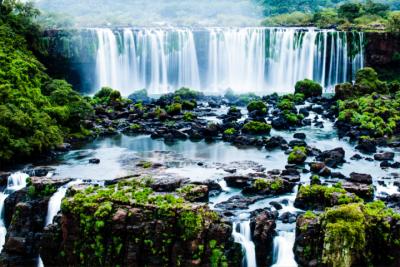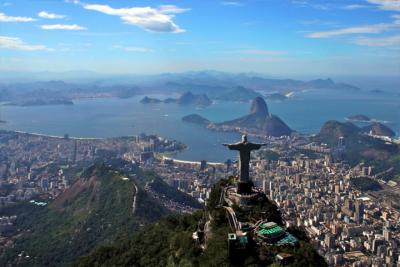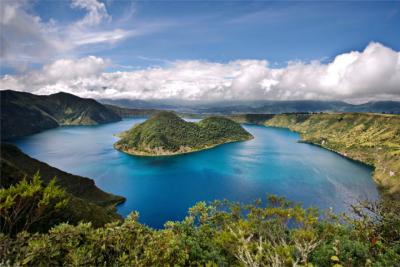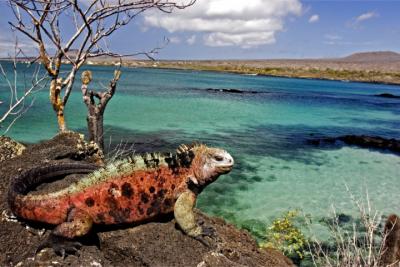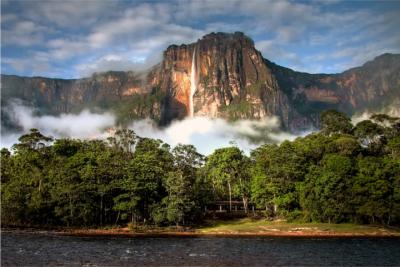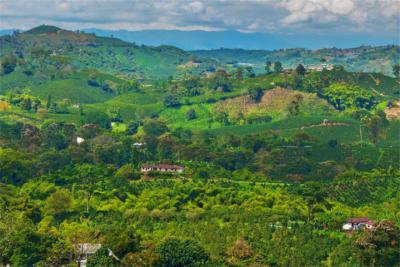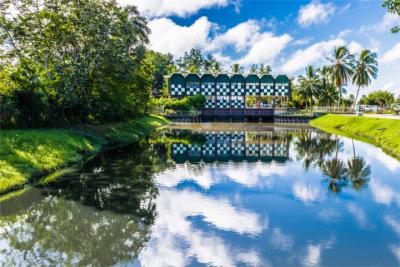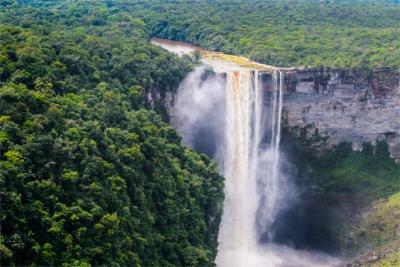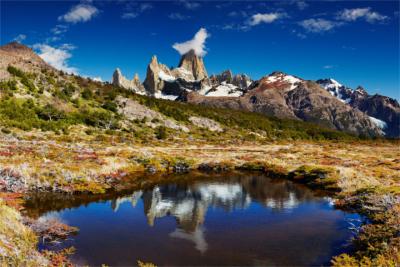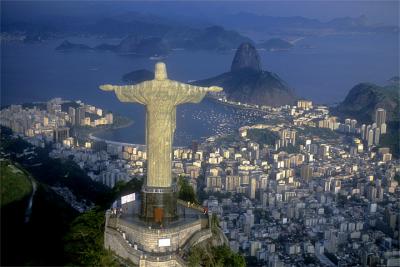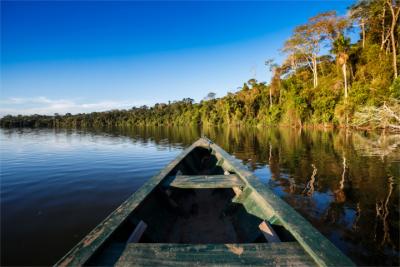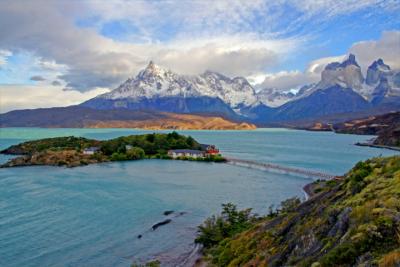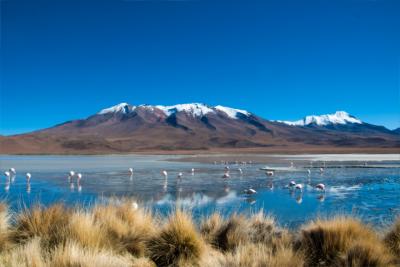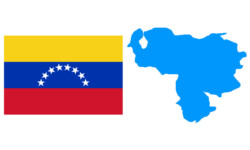Travel Offers
Travelmyne Featureprint
Distance
Venezuela - Natural Paradise in South America
The Angel Falls are the highest waterfall on earth and one of the most popular travel destinations in South America. But Venezuela has a lot more to offer. Untouched jungles, bizarre moon landscapes and snowy peaks only constitute a few of the country's extremely diverse landscape areas.

Geography - At the Caribbean Sea
Venezuela is located at the Caribbean coast, enclosed by Colombia, Guyana and Brazil. 23 states, one capital and several Federal Dependencies constitute the country in the far north of South America. Besides the capital of Caracas, the cities of Maracaibo, Valencia and Ciudad Guayana are worth seeing. Although the climate is generally categorised as tropical, there are considerable temperature fluctuations because of the different altitudes. The average yearly temperature is 21 °C and very consistent. It gets much warmer in other regions, especially in summer. In the high mountain regions, it does not get any warmer than 8 °C. Some peaks are covered in snow all year. The dry season lasts from November to April. The rest of the year has high precipitation. Waterproof clothes and shoes are part of every traveller's basic equipment, especially in October.

Nature - Gigantic waterfalls and table mountains
Venezuela is characterised by extraordinary natural areas. The country can be divided into four main regions: the rugged mountain ranges of the Andes, the vast Orinoco Delta, the Guiana Highlands and the Maracaibo Lowlands. Untouched jungle, deep marshes and snowy peaks are only a few examples on a long list of natural regions. Most people think of the Angel Falls first when they think of Venezuela - the highest waterfall on earth. The water pours down as a sea of mist and clouds for almost one kilometre, the exact number is between 978 and 980 metres. The plateaus of the Highlands, the great table mountains, are a memorable sight too. One of the most impressive table mountains is the magnificent Gran Sabana. The tropical rainforests and cloud forests are home to orchids, bromeliads and vanilla orchids. Rare animal species such as tapirs, pumas and sloths populate these regions. In addition, you see bloodsucking bats, voracious alligators and piranhas. Besides the Andes and the tropical forests, visitors can discover Lake Maracaibo (13,000 km²), the Caribbean coast (2,800 km) or the country's inhospitable desert landscapes - an adventure without equal.

Natural sights - The Angel Falls, the Orinoco and Los Roques
Over 60 percent of the country's area are protected. One of the most beautiful national parks is Canaima National Park. It accommodates the legendary Angel Falls (Salto Àngel), who were named after the discoverer and amateur pilot James Angel. He explored the gigantic waterfall by plane in 1935. A trip into the park by plane still offers a spectacular sights. Via the rivers of Río Carrao and Río Churún, visitors can get very close to the waterfall. The moon landscape of the Roraima is one of the country's highlights. In fact, this region looks like it is from another planet. The gigantic sand dunes in Coro look equally bizarre. Visitors may feel like they are somewhere in the Eastern Desert. You should not miss out on a boat tour through the Orinoco Delta. With a bit of luck, you can spot the trusting Amazon river dolphins. Travellers who do not want to move far away from the capital of Caracas can take the cable car into the El Ávila National Park and enjoy its waterfalls during a long hike. Another tour leads you to the glacier of the Pico Pan de Azúcar. Venezuela's highest mountain, the Pico Bólivar (4,981 m), is covered in snow all year. A great way of ending holidays in Venezuela is a trip to Los Roques archipelago. Unique sandy beaches and the turquoise sea make this natural trip an unforgettable experience.

Culture - From the settlement to the capital
Native American tribes, which lived on fishing and tillage farming, were the first inhabitants of the present-day territory of Venezuela. Not much is known about that time any more. The first European who arrived in the country was Columbus in 1498. The following year, Amerigo Vespucci reached the unknown country with his ships. According to legend, the stilt houses he found there reminded him of Venice and so he named the country "Venezuela" - the "small Venice". In the 16th century, the first settlements were built and Caracas was founded. It has developed into the country's cultural capital and offers a wide range of exhibitions, art events and sights.

Cultural sights - Caracas, Coro and Native American villages
The capital of Caracas, which was founded in 1567, is located at an altitude of 800 to 1,000 metres in a fertile, green valley in the middle of the El Ávila massif. Holidaymakers should visit its great cathedral, the beautiful town hall and the Church of San Francisco (Iglesia de San Francisco). The university city of Caracas as well as the historical centre and harbour of Coro are part of the UNESCO World Cultural Heritage. The historical old town of Ciudad Bolívar is also worth seeing. Travellers who want to follow the traces of the indigenous population should visit one of the Native American villages in the jungle.

Experience - Tasting muchacho and meeting Merengue dancers
Due to Venezuela's history, the country's cuisine is influenced by Europe. In addition, you find several delicious local dishes. Examples are the maize flatbread arepa, which is stuffed with cheese or meat, and muchacho, a roasted pig in a juicy sauce. The national dish pabellón consists of beef, beans and fried plantains. Popular drinks are fresh fruit juices. In the evening, delicious Venezuelan rum is added to the juices. Coffee lovers should not miss out on the country's coffee. It is very strong but all the more aromatic. A pouch of freshly ground beans is a popular souvenir as is cocoa or handmade Native American jewellery. Chinchorros, colourful hammocks, are particularly authentic products. Venezuela's nightlife is not to be underestimated. Fiery rhythms and extrovert dancers move to Merengue. It is easy for visitors to get in touch with the locals on the dance floor. You find live music, discos, bars and restaurants with long opening hours in the capital and the tourist locations.

Activities - A bathing and fishing paradise
The most beautiful bathing beaches are located on Margarita Island (Isla Margarita), Los Roques archipelago and along the Caribbean coast. Venezuela is also known among divers. Wonderful coral gardens, unexplored grottoes and shipwrecks are waiting around Isla Margarita. Fishers can also go on an adventure here. Quick payaras, giant clarias and vicious piranhas lurk in the Orinoco Delta. Travellers can go on hikes everywhere. The jungle, the beaches and the highlands of Mérida offer stunning hiking and trekking routes. Mountaineers enjoy the Andes and Pico Humboldt is a popular climbing location.

Information
The best time for travelling Venezuela is the dry season from November to April but a trip to the country is worth one's while at any time of the year. Venezuela is only a stone's throw away from the Caribbean. Many cruise lines offer tours from Venezuela to the beautiful Caribbean islands.
An extraordinarily diverse and extreme natural landscape makes Venezuela an appealing destination for all lovers of nature and adventurers. The wonderful beaches at the Caribbean Sea offer room for relaxation and make many holidaymakers' dreams come true.

